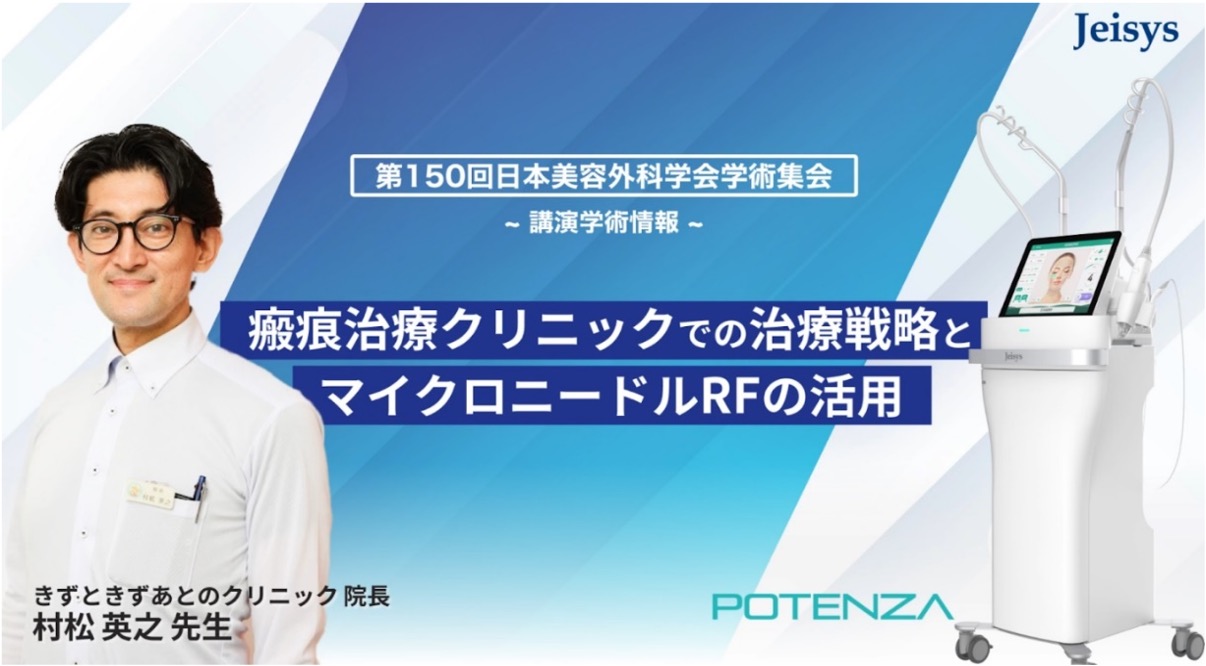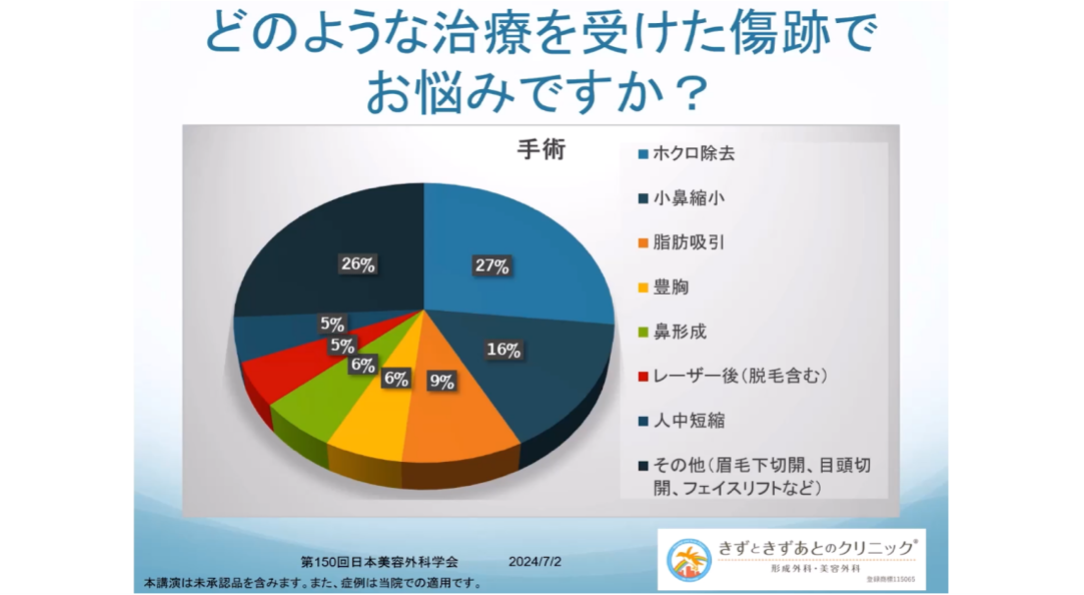
As medical technology evolves, more patients are undergoing cosmetic surgery. However, plastic surgery is increasingly concerned with how to deal with patients suffering from postoperative scarring and complications.
This article details the causes of postoperative complications, types of scarring, and treatment options from the perspective of a plastic surgeon specializing in wound care.
- INDEX
Current Status of Scar Treatment After Cosmetic Surgery (02:03-)

The number of patients suffering from scarring after cosmetic surgeries has increased rapidly these days. Scarring has been reported particularly frequently after mole removal, nose reduction, liposuction, and breast augmentation.
These surgical sites are prone to scarring, but as patients become more literate, they are more sensitive to postoperative appearance and scarring. While cosmetic surgery grows in popularity, the number of cosmetic surgeons whose knowledge of plastic surgery remains limited is growing, increasing the need to address the issue of postoperative scarring.
Mechanisms of Scar Formation and Treatment Methods (06:23-)

The scar formed during the healing process of a wound involves a process called “wound healing kinetics. The wound healing process includes bleeding, coagulation, inflammation, collagen production, and finally maturation.
If this process does not proceed smoothly, the scar will not fade cleanly. Prolonged infection and bleeding can impede wound healing, resulting in an increased risk of scar formation.
Proper wound management and nutritional support have also shown to positively impact the healing process. Keeping the wound properly moisturized is important, as dryness can negatively affect scar formation. Scar treatment is based on these basic treatment principles.
Types of Scars and Their Characteristics (08:32-)

There are several types of scars, each with different treatment options. The main types are as follows:
- Immature scar
This is a scar that is red and hard and is still healing. Any scar will remain red and hard, especially from six months to a year after surgery. Ointments and laser treatment are often used during this stage. - Mature scar
The scar has turned white and is almost completely free of pain and itching. At this stage, the treatment progression is almost complete, but surgical techniques may be used for further improvement. - Keloid/Hypertrophic scar
A scar that is red and raised which does not flatten. Keloids are highly inflamed, while hypertrophic scars have relatively mild inflammation. Particularly difficult to treat, they are treated with a combination of various methods, including drugs, compression therapy, laser or radiation therapy. - Cicatricial contracture
This is a condition that causes scarring, pain and bumps. In this case, surgical treatment is primarily required.
Its predilection sites are the chest, shoulders, arms, and lower abdomen. On the face, they are around the nose, lips, face line, and in front and behind the ears.
Cases of Scar Treatment with POTENZA (18:27-)

POTENZA is a cosmetic treatment device that uses RF and is effective for a variety of skin problems. It is especially utilized in the treatment of acne scars and hypertrophic scars.
The feature of POTENZA is that it can treat a wide range of cases by combining many types of tips and handpieces.

In particular, Pumping Tip, which applies negative pressure to inject the drug, is very effective. The needle penetrates deep into the skin, enhancing the effect of the treatment.
In addition, POTENZA can be used with different drugs to provide flexible treatment tailored to the needs of individual patients. Combination with McCoom is particularly effective.

POTENZA can also be used to reduce inflammation in cases of skin necrosis after liposuction or scars caused by falls. It can also improve the appearance of scars by gradually softening them. In this case, POTENZA was used for 5 months, and the results were amazing.

POTENZA is also effective in improving scars after lip lift surgery. It combines RF and negative pressure technology to treat inflammation and hardened tissue after surgery and promotes collagen production in deep tissue. This treatment method provides results that are difficult to achieve with regular laser treatments.
Introducing POTENZA early helps to quickly reduce inflammation and promote post-operative recovery, so it is less stressful for the patient.
Summary(23:40~)
Although cosmetic surgery has become more accessible due to advances in technology, problems such as post-operative scarring and complications have also increased.
To deal with this problem, the knowledge and skills of plastic surgeons are important. It is particularly necessary to understand the types of scars and treatment methods, and to provide appropriate treatment for each patient.
It is expected that the role of plastic surgeons will continue to increase in the future, and that collaboration with cosmetic surgeons will become even more important.


